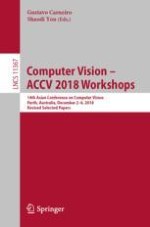2019 | OriginalPaper | Buchkapitel
Learning to Clean: A GAN Perspective
verfasst von : Monika Sharma, Abhishek Verma, Lovekesh Vig
Erschienen in: Computer Vision – ACCV 2018 Workshops
Aktivieren Sie unsere intelligente Suche, um passende Fachinhalte oder Patente zu finden.
Wählen Sie Textabschnitte aus um mit Künstlicher Intelligenz passenden Patente zu finden. powered by
Markieren Sie Textabschnitte, um KI-gestützt weitere passende Inhalte zu finden. powered by
